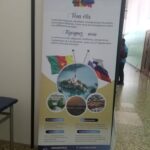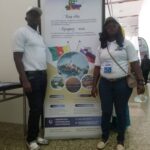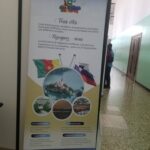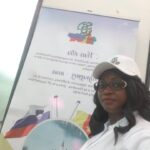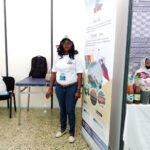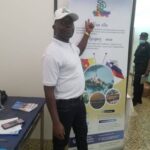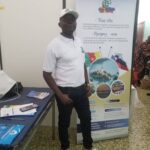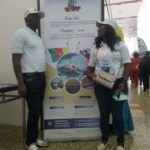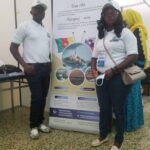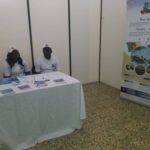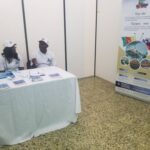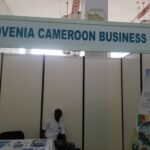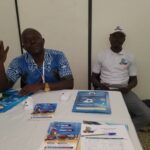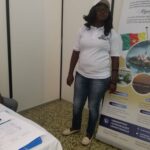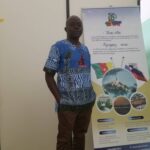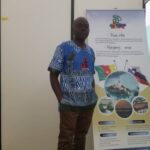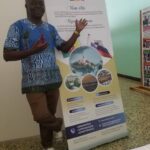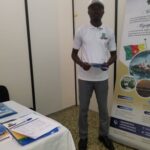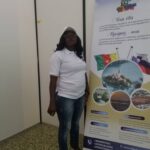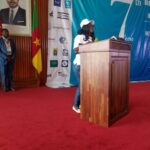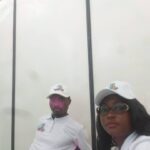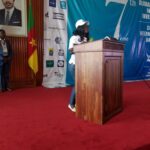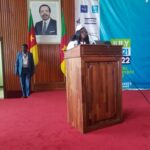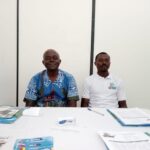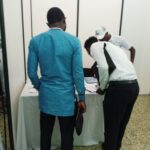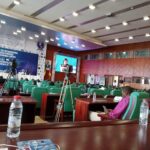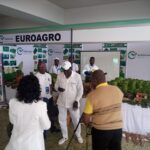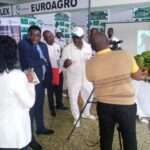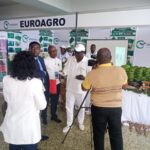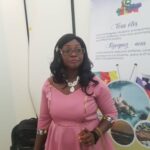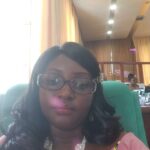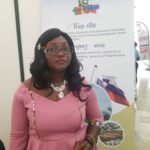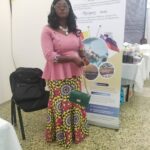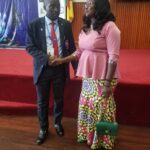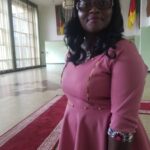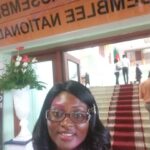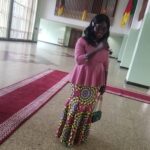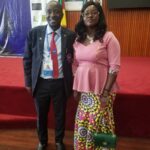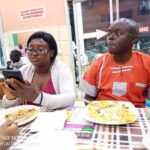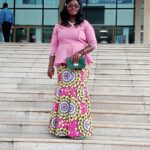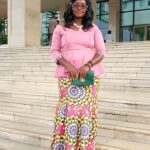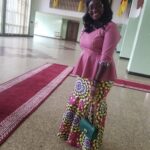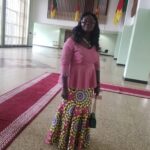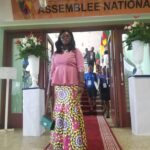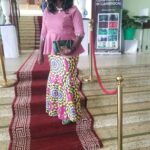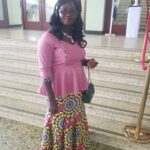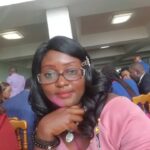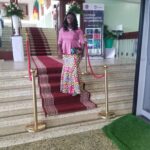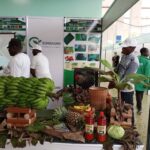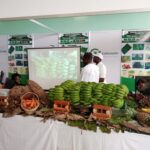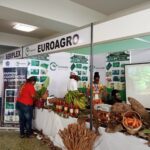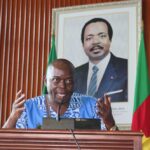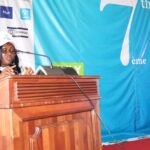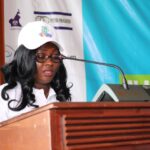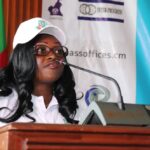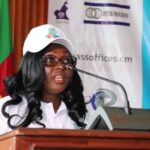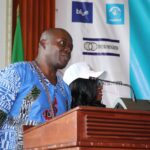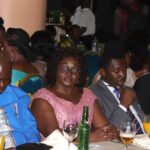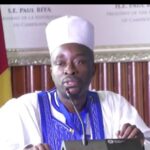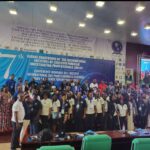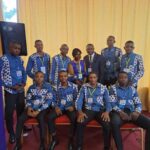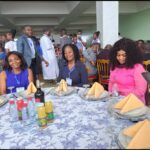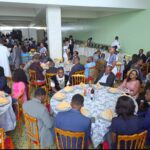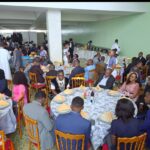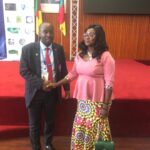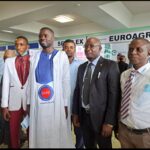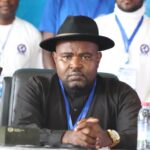Cameroon the "Africa in miniature"
Slovenia is an excellent destination for international students looking to grow academically and professionally. With a wide range of study programs at higher education institutions such as universities, professional colleges, and art academies, listed among the top best universities in the world, and affordable living costs, it’s no wonder that more and more students are choosing Slovenia as their prime study destination.
In addition to these practical considerations, Slovenia is also a beautiful country with a rich history and culture, welcoming people, and numerous natural wonders. Plus, there are many scholarship schemes available for international students, and many courses are taught in English, making it easier for students to adjust to life in Slovenia.
So, how can you study in Slovenia?
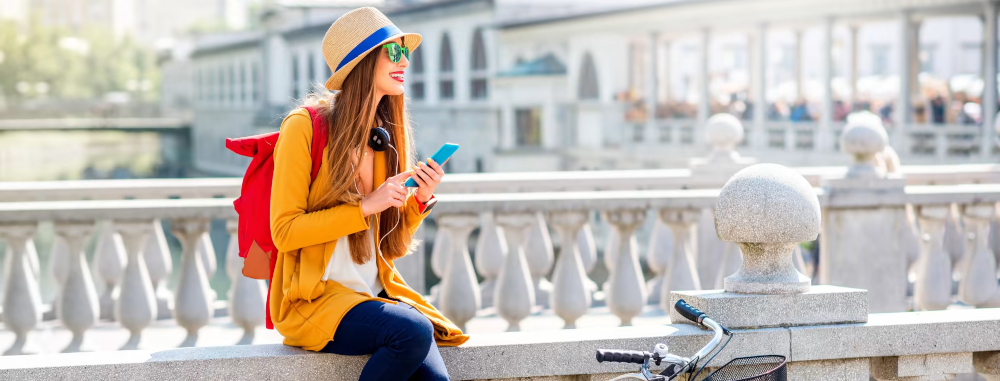
The process is relatively straightforward: first, explore your options and choose a university and course that meet your needs and interests. Next, check the eligibility criteria and required documents for your chosen course, and gather all necessary paperwork. Then, fill out the application form correctly and submit it along with the required documents. If you are accepted, the university will issue an offer letter, which you will use to apply for a study visa. Once you have your visa, you can fly to Slovenia and begin your studies.
There are many great courses to choose from in Slovenia, including computer and information science, medicine, management and administration, economics, engineering, architecture, marketing, and tourism. No matter what your background or interests, you’re sure to find a course that fits your needs.
Universities in Slovenia
Despite being a small country in Europe, Slovenia has some of the best universities and is ranked among the top best universities of the world. foreign students can easily secure their seats in these universities. Some of the best universities in Slovenia are:
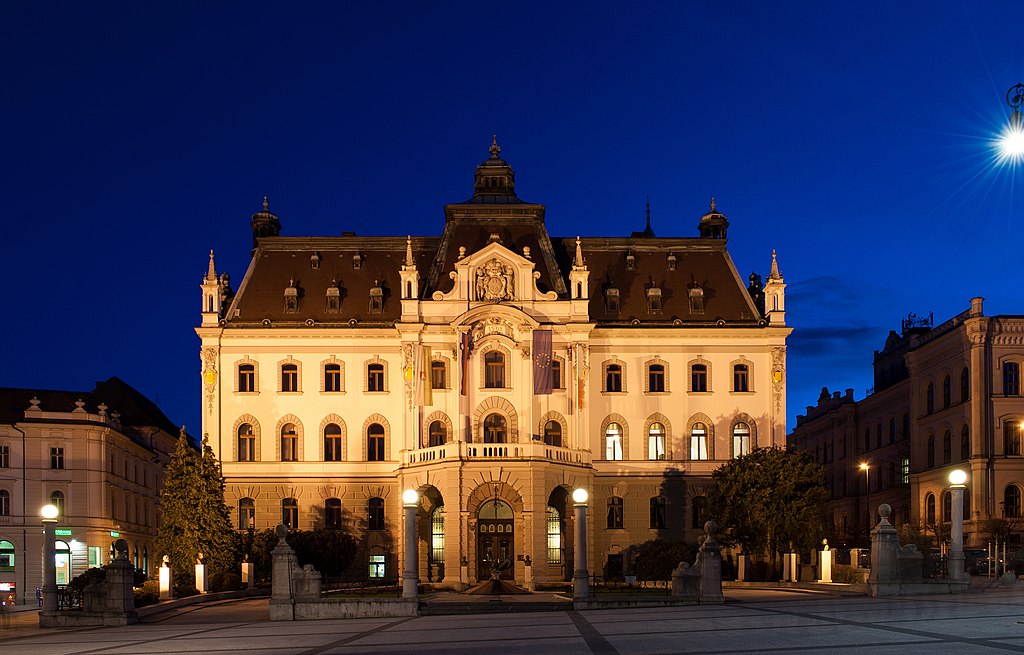
- University of Ljubljana, Ljubljana
- University of Maribor, Maribor
- University of Nova Gorica, Nova Gorica
- University of Novo Mesto, Novo Mesto
- University of Primorska, Koper
- EMUNI University
- Alma Mater Europaea – Institutum Studiorum Humanitatis (AME ISH)
- International School for Social and Business Studies
- Jošef Stefan International Postgraduate School
- Academy of Visual Arts, Ljubljana
To apply to a university in Slovenia, you’ll need to provide some important documents, such as a filled-out application form, educational certificates, a language proficiency certificate, a copy of your passport, a motivation letter, letters of recommendation, and potentially other documents depending on your course of study.
Tuition fees Slovenia
At public universities in Slovenia, students from the EU (European Union ) countries and from the former yugoslavia( Montenegro Bosnia and Herzegovina Serbia Kosovo North Macedonia) don’t have to pay tuition fees for Bachelors or Masters. For non-EU students and third country nationals, tuition fees differ with the institution and course chosen. On average:
- A Bachelor’s degree ranges from 2,000 EUR to 5,000 EUR.
- Master’s degree from 2,500 EUR to 7,500 EUR ,
- 3,000 EUR to 12,000 EUR for Doctorate(PHD).
Cost of living in slovenia.
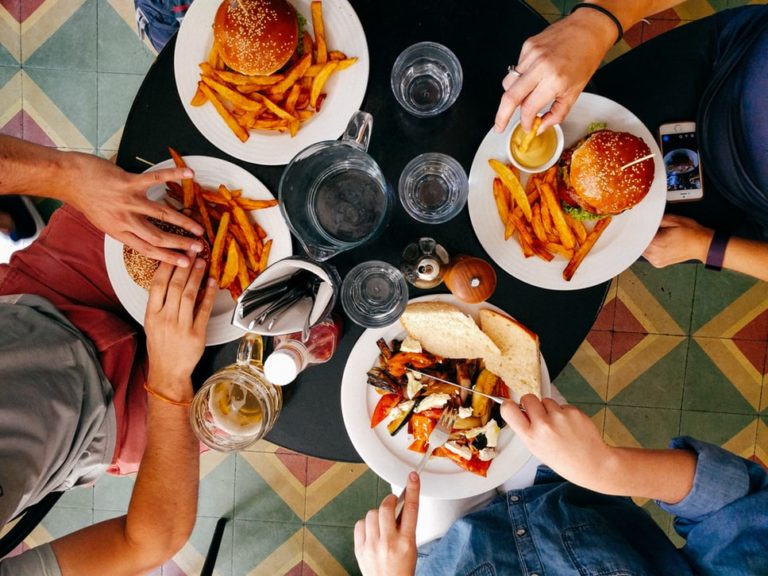
Slovenia is one of the best destinations that offers relatively low cost of living for international students., Student meals are subsidised by the government, almost 80% of restaurants adhere to it, making the overall cost of living for students comparatively low.
In Slovenia, you can opt for living in student dormitories, where monthly rent is about 120-250 EUR, all inclusive. You can also live in private flats where rent is a bit higher, but still not so bad.

Applying for a Student Visa to Study in Slovenia.
- Application fee.
- Two passport size photos
- Your fingerprints will be taken
- A passport, valid for at least 3 more months after the completion of the course in Slovenia.
- A certificate or letter proving your admission at a Slovenian university.
- Health insurance
- Certificate of non-conviction from your home country(criminal record).
- Proof that you can cover all your expenses while studying in Slovenia.
Overall, Slovenia is a great choice for international students looking for high-quality education at an affordable price in a beautiful and welcoming country. With its wide range of study options, scholarship opportunities, and affordable living costs, it’s no wonder that more and more students are choosing to study in Slovenia.
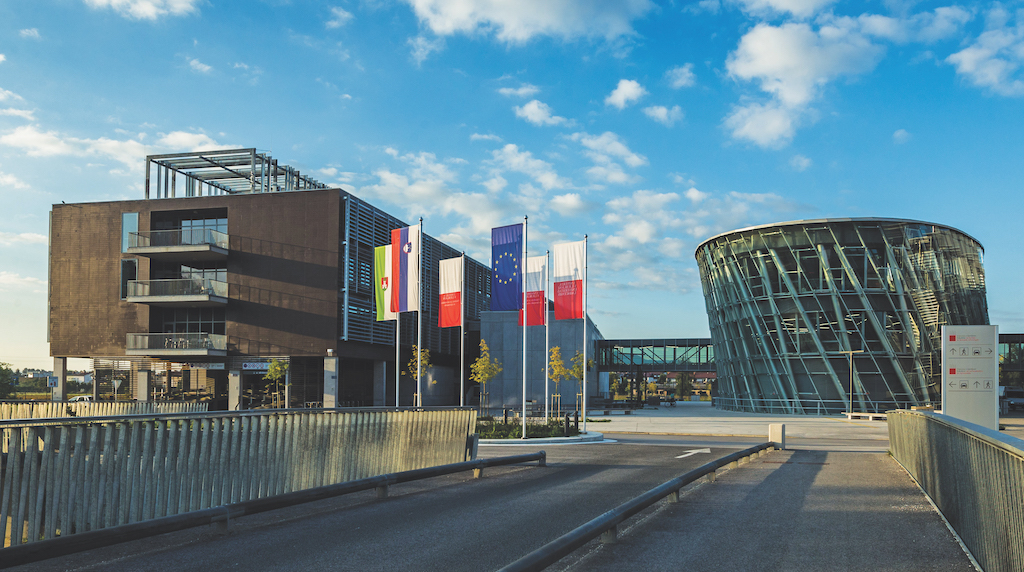
Cameroon the Africa in Miniature
Cameroon the “Africa in miniature”
 Cameroon is strategically positioned between West and Central Africa. With the rough size of Spain and nearly 25 million people it makes it relatively sparsely populated. But on the other hand the fact that around half of its population lives in the metropolitan areas puts it in a prime position to develop industry and commerce.
Cameroon is strategically positioned between West and Central Africa. With the rough size of Spain and nearly 25 million people it makes it relatively sparsely populated. But on the other hand the fact that around half of its population lives in the metropolitan areas puts it in a prime position to develop industry and commerce.
Cameroon is subdivided into ten major regions. Douala the economic capital and the biggest port in the country, Yaounde the political and administrative capital.
Based on the colonial history of Cameroon. It was “discovered” by Portuguese explorers in the 15th century and named Rio dos Camarões (Shrimp River). At the end of the 19th century it became a German colony (Kamerun). After WWI the country was divided between France and the United Kingdom.
Cameroon, as we know it, was established when in 1960 the French part became independent. It was joined by the Anglophone region in 1961 forming a Federal republic – with both parts keeping a semblance of independence. In 1972 the federation was abandoned. The proverbial disdain between the Englikanized and Frankofonized population continues to this day and has recently escalated to a civil war recognized by the US.
The governmental power stems from the president (H.E.Paul Biya aged 89 since his first election in 1982). He appoints government officials at all levels, from the prime minister (considered the official head of government), to the provincial governors and divisional officers.
The Legislative branch is divided into the National Assembly and the Senate, however both at present hold only nominal power.
The constitution divides Cameroon into 10 semi-autonomous regions, each under the administration of an elected Regional Council. Each region is headed by a presidential appointed governor.
The government recognizes the authority of traditional chiefs, Fons, sultan and Lamibe to govern at the local level and to resolve disputes as long as such rulings do not conflict with national law.
The president appoints judges at all levels. Cameroon’s legal system is a mixture of civil law, common law and customary law.
Unsurprisingly Cameroon is rife with corruption – Transparency International ranked Cameroon 152 on a list of 180 countries in 2018. Although press freedoms have improved since the first decade of the 21st century, the press is corrupt and beholden to special interests and political groups.
This is however expected to change, as the population is getting more and more educated. Cameroon has one of the highest school attendance rates in Africa. In 2013, the primary school enrollment rate was 93.5%. Secondly, cell phone networks and Internet providers have increased dramatically since the first decade of the 21st century and are largely unregulated. This indicates large potential for businesses focused on modern marketing and communication.
Cameroon has had a decade of strong economic performance, with GDP growing at an average of 4% per year. Uniquely among the growing African countries this is not facilitated by large scale exploitation of natural resources. Cameroon possesses substantial mineral resources, but these are not extensively mined. Petroleum exploitation has fallen since 1986, but this is still a substantial sector such that dips in prices have a strong effect on the economy – which would presume that the near future will see large possibilities for investment by local companies.
It is still largely an agricultural nation. An estimated 70% of the population farms, and agriculture comprised an estimated 16.7% of GDP in 2017. Large numbers of Cameroonians live as subsistence farmers. Soils and climate on the coast encourage extensive commercial cultivation of bananas, cocoa, oil palms, rubber, and tea. Inland on the South Cameroon Plateau, cash crops include coffee, sugar, and tobacco. Coffee is a major cash crop in the western highlands, and in the north, natural conditions favor crops such as cotton, groundnuts, and rice. Production of Fair-trade cotton was initiated in Cameroon in 2004. The southern rain-forest has vast timber reserves, estimated to cover 37% of Cameroon’s total land area. However, large areas of the forest are difficult to reach.
Factory-based industry accounted for an estimated 26.5% of GDP in 2017. The government has taken measures to encourage tourism in the country which also indicates possibilities for investment. But care should be taken when doing so, as a “hands and eyes on” approach is required.
Cameroon’s relatively large and diverse population is also diverse in its contemporary fashion. Traditional arts and crafts are practiced throughout the country for commercial, decorative, and religious purposes. Wood carvings and sculptures are especially common. The high-quality clay of the western highlands is used for pottery and ceramics. Other crafts include basket weaving, bead-working, brass and bronze working, calabash carving and painting, embroidery, and leather working. All these sectors are ripe for investment and export, but must be curated so as to meet the demands of the fickle western market hungry for exotic and diverse items.
Slovenia the Green Nation
Slovenia “In the Heart of Europe”
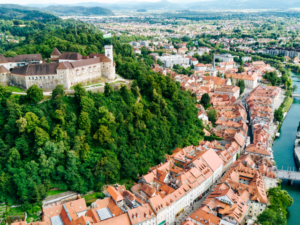 Where the Alps meet the Mediterranean and the Pannonian Plain meets the Karst, there is Slovenia. This small green country extends in the area similar to Equatorial Guinea. With its population of only 2 million it’s not the most densely populated country, but still almost twice the population density of Cameroon.
Where the Alps meet the Mediterranean and the Pannonian Plain meets the Karst, there is Slovenia. This small green country extends in the area similar to Equatorial Guinea. With its population of only 2 million it’s not the most densely populated country, but still almost twice the population density of Cameroon.
Slovenians belong to a large ethnic group of Slavs that moved to the land sometime after the fall of the Roman Empire. While they were – and still are – strong headed people they spend most of their history ruled by other nations.
During the first millennia they were slowly Christianize first by Irish missionaries, then by the Franks and at the end of the millennia they were incorporated into the Holy Roman Empire.
There were several times when the Slovene population was ruled by Slovene people – The Carantania Douchy, the Counts of Celje, but each time the size of the land was smaller and while it gained traction in the beginning it usually meet its end by encroaching Germanic powers, except during a short period of the French Empire when Napoleon conquered them and established the “Illyrian provinces”.
The Slovenian ethnic territory was controlled and slowly Germanised and was completely incorporated into the Habsburg Monarchy – The Austrian Empire. The exception being a small part that was controlled by the Venetians. After the fall of the Republic of Venice the lands were taken over by the Austrian Empire and were held by it until WWI.
The Slovenians were put into an unfavorable position of being the Christian people that were bordering on the burgeoning Turkish empire and were thus under constant economic and demographic pressure. This led to several peasant revolts that would form the first core of the Slovenian identity.
The other cause of this was large scale emigration of the Slovenian people during the end of 19th and end of 20th century. One in six Slovenes left their country for the US, South America, Germany or to larger cities in Austria.
On the national front Slovenian identity was being reestablished by Romantic nationalist. Slovenian language was the driving force of unification. But by this time the Slovenian people were far behind in numbers and culturally overwhelmed by their ruling classes and would take a long time to recover.
WWI brought an abrupt end to the revival of the Slovenian identity. One of the major fronts – between Italy and Austria – was fought on Slovenian territory. After the loss of Austria the Slovenian people were divided between Italy, Austria and the Kingdom of Yugoslavia – a newly established Kingdom of Yugoslavia – a grouping of Slovenes, Croatians and Serbs.
During this time the Slovenians in Italy and Austria were forcefully and systematically “integrated” – losing schools in their native language being discriminated against and in general oppressed.
WWII Brought new strife to the Slovenian population. In the beginning Italy and Germany divided the Slovenian “nation” and initiated a plan of ethnic cleansing – forceful relocation, labor camps, conscription to the army etc. Children were taken from parents and allocated to German families. On top of that the Slovenian resistance was not united and a civil war broke between the Partisans – Communism influenced patriots who opposed the occupation of the Nationalistic countries supported by Russia – and the Slovene Home Guard – who opposed communism and were supported by the German Nazi regime. The catholic church played a big role in this actively supporting Nazism over Communism.
After the war the Socialists took power – exacting a terrible revenge on the supporters of the German regime. Those who did not manage to escape were executed as traitors.
In the wake of WWII Yugoslavia was established under the leadership of a Partisan Leader Josip Broz – Tito. Yugoslavia played an interesting role as it did not join the Eastern (Russian) block nor the Democratic West. It tried to function as the third option – establishing the “Non-Aligned Movement” forum of countries that are not formally aligned with any major block (Russia, China, US). At present Cameroon – and all other African Countries – are still members of this “Movement”.
The Yugoslavia era was at the same time good and bad for the Slovenian people. Slovenia was the economic powerhouse of the Federation and had more autonomy than ever. On the other hand the pressures to unite the Federation were strong. After the death of Tito – the unifying force of the Federation – the Slovenian independence gained strength until it finally gained its full independence in 1991. Unlike its southern neighbors it only suffered a 10 day war for independence whereupon the Yugoslav People’s Army(controlled by Serbia) withdrew in order to fight a much more prolonged conflict with Croatia and Bosnia.
Slovenia is a parliamentary Democracy. Elections are held every four years. This is the legislative branch.
The prime minister is selected by the majority of the elected representatives, and he forms the government.
The third branch of government is the court. They are to be independent from the government but its power waxes and veins depending on the power of the coalition and who is in power.
Press enjoys relative freedom. It is however ostensibly left leaning and will generally clash with a right wing – conservative government. This often leads to the government attempting to limit the power of the media.
Slovenia is not free of corruption. The European Union actually created a special designation of corruption based on the Slovenia case – friendships and acquaintance corruption. It is a lot harder to bribe state officials than it is to influence them by gaining their friendship.
While there are great efforts to curb the corruption the work is usually not successful as the corrupt individuals loyal to one faction are replaced with other individuals loyal to a different faction.
In navigating Slovenian politics it is important to note that becoming too close to one politician can lead to a setback after the next election cycle.
Slovenia is considered to be economically well established. Only 4% of the population is employed in agriculture. But that does mean that the country is not self sufficient.
It has a long tradition of mining and industry and is rapidly moving into the service economy.
While Tourism isn’t central to its economy, it’s well established, featuring ski resorts, spas, seaside and mountaineering activities.
It is leveraging its position where it serves as a connecting country between the east and the west and north and south Europe. It augments this by upgrading its infrastructure. Highways, rail and air are all parts of constant investment.
Its manufacturing is rapidly innovating and expanding – mostly in the automotive branch. It is rapidly expanding its digital infrastructure – pushing automation and digitization in all sectors. And it tries to achieve all this without causing too much damage to their natural resources.
It puts great stock in its workforce and education – education is mostly free for citizens.



